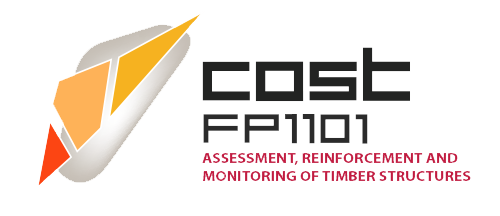Current Projects
 Ph.D. (Information Technology)
Udaras na Gaeltachta
Ph.D. (Information Technology)
Udaras na Gaeltachta
The aim of this research is to improve the quality of service (QoS) of VoIP over wireless networks based on synchronised time. Extensive research has been carried on the 802.11e wireless protocol, in particular on the Contention based channel access mechanism EDCA (Enhanced Distributed Channel Access). EDCA provides four access categories which provide proiritisation for voice traffic over all other traffic. We aim to provide proiritisation for voice packets over other voice traffic, within an access category, using each-way delay information which can be provided by synch' time.
Time Synchronization Issues for IPTV: This research will examine a range of synch issues for IPTV. In particular, it will focus on case of a TV channel and RSS news channel. Often IPTV systems can only multicast one channel at a time to every client so the IPTV middleware will be responsible for synchronizing the TV channel and RSS feed to create a new combined channel and send it to the client as one.
SolanoTech Ltd. An Athlone based IPTV and Networked TV solutions provider for the Telco, Cable and Enterprise markets. SolanoTech has implemented Irelands's first commercial IPTV IMS Multimedia lab which has a physical representation of all elements of an IPTV deployment and includes an IMS Service Delivery Environment.
 Ph.D. (Information Technology)
Ph.D. (Information Technology)
WebRTC/Rtcweb, Web Realtime Communications, is becoming a widely adopted standard in web browsers and mobile applications. This research is an attempt to evaluate the capabilities of a WebRTC implementation in terms of voice quality in the presence of network jitter. Network jitter can result in varying mouth-to-ear delays and packet loss, which are critical factors for interactivity in voice conversations. The experiments are fulfilled in the form of black box testing and the speech quality assessment is performed using Perceptual Evaluation of Speech Quality (PESQ). The research also aims to assess the QoS performance by comparing receiver jitter buffer algorithms, i.e. fixed-size vs. adaptive.
 Ph.D. (Information Technology)
Ph.D. (Information Technology)
A Testbed to Estimate the Accuracy of Network Emulators.
Network emulators are used to create an environment whereby researchers and developers can test their software and protocols to evaluate their performance, stability, or functionality against real-world network scenarios. Netem is an open source network emulation tool and is used widely by researchers all over the world to test the performance of systems under different network conditions. As such, many important results are based on the correct functioning of such emulators. This research aims to evaluate the performance accuracy of NetEm functions under different conditions by building a testbed that facilitates precise testing of the different NetEm features.
 M.Sc. (Software Design and Development)
M.Sc. (Software Design and Development)
WebRTC (Web-based Real-Time Communication) allows you to set up connections between browsers and access devices such as webcams and microphones without the need for downloads or plugins. Quality of service (QoS) is an important issue in VoIP implementations. The quality of a call depends on many factors, such as, packet loss, delay and jitter. Jitter can be described as a variation in delay between received packets. A jitter buffer can be used to eliminate this variation by adding small amounts of delay to make it seem like the packets were received without any delay. However, the jitter buffer itself can cause delay if not managed properly. The aim of this research is to expand on the existing VoIP application to improve jitter buffer management.
 M.Sc.
M.Sc.
Wind power is becoming an increasingly popular alternative to fossil fuel based energy. Ireland has envious wind resources at its disposal which is reflected in the huge growth in wind farm projects over the last 15 years. However, by its nature, wind is variable and power output is thus very difficult to accurately predict. Artificial Intelligence techniques are increasingly being used to forecast both wind speed and consequent power output. Artificial Intelligence techniques can learn from large sets of historical weather and wind power generation data. These models are trained to recognise certain sets of data using algorithms, and are then tested on data it has not previously seen. During the uncertainty analysis phase, certain adjustments are made to minimise the error or ‘wrongness’ of output. Essentially, the principle overarching challenge of this project is to create an AI model that can reduce the error between the forecast wind generation and actual wind generation supplied by Eirgrid.
 M.Sc. (Software Design and Development)
M.Sc. (Software Design and Development)
Time-aware Gaming – level the playing field for everyone.
GamingAnywhere is the first open-source clouding gaming platform. Games run on the server while gamers interact with the game via networked thin client. This project will investigate the use of precise time by analyzing the captured RTCP packets. Having access to the precise time can manipulate the delays such as extending the short delay while there are significantly different delays between server and each client. The modification of GamingAnywhere source code is to equalise the player’s latencies. It is meaningful to improve the Quality of Experience of GamingAnywhere platform.
Current Undergraduate Projects
SDN techniques to improve multimedia quality.
working with the NS-3 network simulator to simulate standard networks and then show how QoE can be increased by using the openflow protocol
- Explain NS-3 and its capabilities.
- Understand and explain the SDN and OpenFlow concepts through research, implementation and visualization of networks.
- Simulate various networks and show how these networks are subject to delay by examining log files produced in NS-3 and show how this delay leads to a decreased QoS and essentially a decreased QoE for the user.
- Show how SDN techniques can reduce the delay across these networks and hence increase the quality of services by improving network performance.
An app that track's a users journey whether that be walking, cycling or in a car and to be able to extract data such as journey time, average speed, time stopped and accelerometer readings. The main purpose of the app is help county councils and civil engineering companies become aware of the safety hazards and poorly designed road infrastructures across the country.
- Gather and store journey data (journey time, speed, etc.) in backend database.
- Perform analytics in the backend on the data of all the users which will be accessible to the administrator of the app.
- Provide statistics to the user from their journeys.
- Allow user to have input into journey safety and rating.
The effect of precise time on Software Defined Networking Openflow protocol. Working with Mininet creating a network and testing the effects of precise time on the Openflow protocol.
- Explain Mininet and its capabilities.
- Understand and explain the SDN and OpenFlow concepts through research, implementation and visualization of networks.
- Simulate network traffic through the Openflow protocol and catalog the effects of precise time.
Current Interns

Hakan Ozkok is a final year undergraduate in Department of Computer Engineering, TOBB ETU, Turkey.
He worked in Kasirga Laboratory in TOBB ETU for 3 months and built the “etu.edu.tr” web site with the lab team. Hakan selected the Core Drupal
modules and modified them with custom PHP, as well as administrating the MySQL databases.
He was an intern in HAVELSAN Simulation and Training Systems, Testing Department between Jan, 2014 - Apr, 2014. Hakan worked in a test automation
tool project written in Python and performed formal test procedures with the tool.
Hakan has attended the TUBITAK cyber security summer school ‘14. He improved his cyber security skills in many areas such as windows security, web security, exploit development, network attacks, social engineering etc.. Finished the CTF (Capture the Flag) competition organized by TUBITAK Cyber Security Institute in the second place with his team.
Research Interests:
-Cyber Security
-Programming Languages
-Data Science
Past Projects
 Ph.D. (Information Technology)
IRC
Ph.D. (Information Technology)
IRC
This research focuses on the area of time synchronisation within wireless networks. The research is divided into two areas. The first is concerned with energy efficient time synchronisation within Wireless Sensor Networks (WSNs). In such networks time synchronisation accuracies on the order of microseconds can be achieved using SOTA time protocols however in certain environments, particularly temperature varying ones, these protocols operate inefficiently consuming the limited energy resources of network nodes. The work provides an extension to the widely employed SOTA WSN time protocol, the Flooding Time Synchronisation Protocol (FTSP). This extension termed, the Dynamic Flooding Time Synchronisation Protocol (D-FTSP), can significantly reduce the energy required to attain a particular time accuracy in these environments, thus, extending the life of nodes.
The second area is concerned with improving the accuracy that current wired time synchronisation protocols can achieve over 802.11 networks. The performance of wired time synchronisation protocols such as the Network Time Protocol (NTP) can be significantly degraded when they operate over busy or congested 802.11 wireless links. This work provides a mechanism to determine the latency of time messages in real-time as they traverse 802.11 wireless links. Knowledge of such latencies can greatly improve the performance of time synchronisation protocols that operate over such links. The performance improvements can yield accuracies similar to that achievable over wired links.
 MSc. (Computer Science and Information Technology)
NUI Galway (Teaching Assistant Scholarship)
MSc. (Computer Science and Information Technology)
NUI Galway (Teaching Assistant Scholarship)
The Impact of Dynamic Monitoring Interval Adjustment on Power Consumption in Virtualized Data Centers
Virtualization is one of the principle Data Center (DC) technologies increasingly deployed in recent years to meet the challenges of escalating costs, industry standards and the search for a competitive edge. In this research we take a novel approach to management of the virtualized system which dynamically adjusts the monitoring interval with respect to the average CPU utilization for the DC. We propose this will facilitate identification of cost opportunities which may otherwise have remained hidden mid-interval.
 M.Sc. (Software Design and Development)
M.Sc. (Software Design and Development)
The aim of this research is to develop a system for visualising Building Management System (BMS) data in a web browser. The data will be displayed on a 3D model of the building, automatically extracted from the Building Information Model (BIM). The data generated from a BMS is generally archived in large files and rarely interpreted. The proposed system will give the live and archived data greater context and allow fast analysis of the data. It will also give a platform for possible future development to control the BMS settings directly from the visualisation.
My research focuses on the collection of Smart Energy data from household appliances and the use of this data to profile these appliances and also to detect when they are behaving anomalously.
I have set up a ZigBee Home Area Network which uses ZigBee Smart Plugs along with a Raspberry Pi to gather the Energy Data which is then stored in a database. We intend testing various Machine Learning algorithms to ascertain those that are the most useful and efficient in the areas aforementioned (profiling and detecting anomalous devices).
SolanoTech Ltd. An Athlone based IPTV and Networked TV solutions provider for the Telco, Cable and Enterprise markets. SolanoTech has implemented Irelands's first commercial IPTV IMS Multimedia lab which has a physical representation of all elements of an IPTV deployment and includes an IMS Service Delivery Environment.
 M.Sc. (Software Design and Development)
M.Sc. (Software Design and Development)
The aim of this research is to develop an understanding of the thermal behaviour of a room with forced convection and to analyse the user's thermal comfort in the room. This room is modelled on the boundary conditions, dimensions and HVAC (heating ventilation and air conditioning) conditions of a room in University College Cork. The userís comfort will be analysed by developing subroutines to calculate the mean average age of the air, the predicted mean vote (PMV) and the predicted percentage dissatisfied (PPD). Currently, CFD researchers in engineering at NUI Galway are using Fluent Ansys software. My project will involve using a free open-source CFD called OpenFOAM as a possible alternative.
 M.Sc. (Software Design and Development)
M.Sc. (Software Design and Development)
WebRTC - VoIP Application Development
WebRTC is free, open project that enables Real-Time Communications within web browsers. IT supports browser-to-browser applications for voice and video conversations, without the need of either internal or external plugins. It is being driven by Google along with Firefox and others. The aim of this research is to build on the existing VoIP application within webRTC to implement better Quality of Service features such as improved jitter buffer management. A jitter buffer temporarily stores arriving packets in order to minimize delay variations. It is critical factor in delivering high quality voice conversation over IP network.
 M.Sc. (Software Design and Development)
M.Sc. (Software Design and Development)
Presently in Europe, over 80% of buildings are more than 50 years old, and over 50% of all construction is of a restorative nature. The European Co-operation in Science and Technology (COST) organisation estimates that in most of these countries there will be insufficient funding to finance the restoration of these structures, many of which are 'Listed Buildings' (being of suitable Historical, Architectural or Artistic significance as to earn protection from any alterations or neglect which may hasten their eventual partial or complete ruin). The ideals in restoration often outweigh the financial or intellectual resources available, so this research has explored a different approach.
Our research has developed a user-centric Decision Support Tool, which applies harvested Solutions for all typical restoration Issues encountered in historic timber structures, to aid optimum repair choices. The tool 'TimberSave' recommends the best solution for each specific Case. Finally TimberSave also uses real case-studies to train a database on each stored solution's frequency and conditions, in order to create AI-based recommendations, on a precedence basis.
The project is part of the EU Cost Action FP1101: Assessment, Reinforcement and Monitoring of Timber Structures óWorking group 2.
 M.Sc. (Software Design and Development)
M.Sc. (Software Design and Development)
Determining the indoor location of a smartphone device using acoustic signals.
This research deals with determining the indoor location of a smartphone which transmits audio signals in the frequency range above that of human hearing to a number of audio-enabled sensors. The sensors will be networked and time synchronised. Since the distance travelled by an audio signal in 1 ms (approx. 34 cm) is comparable to the distance travelled by a radio signal in 1 ns (approx. 30 cm) the problem of synchronising the sensors is more tractable as it only requires accuracy to the millisecond level. Each sensor will be attached to an Intel Galileo board which is a Linux based embedded system. Use will be made of the time difference of arrival of the signal (TDOA) to determine the location.
 M.Sc. (Software Design and Development)
M.Sc. (Software Design and Development)
Donde - Web-based Visualisation for Smartphones.
My work involves researching and building a web based visualisation infrastructure for a cloud based indoor positioning system which uses an individual Smartphone as the locator device. Essentially it uses the latest web and smartphone technologies to visualise position in realtime as well as implementing cloud based instant messaging. Technologies used include Advanced Javascript, WebGL, Phone sensors – compass, gyro, Instant Messaging.
